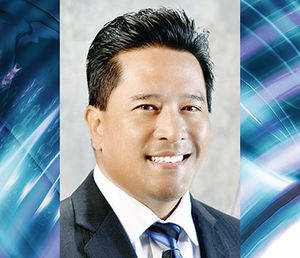On April 14, 2018 Kauai experienced an unprecedented 50 inches of rain within a 24-hour period. Termed “rain bomb,” the torrential rain caused many residents from Haena, Wainiha, Hanalei, Anahola, Keapana, and Koloa severe flooding resulting in significant damage.
Many North Shore residents continue to be affected by huge landslides covering the highway which have kept them landlocked causing socioeconomic hardship. While some are calling it a 500-year flood, climate change authorities believe this incident could be the first of many more to come and Chip Fletcher, Hawaii’s leading expert on the impact of climate change on Pacific island communities, has confirmed this incident as a result of warmer weather due to climate change.
Since the catastrophic event, officials like myself have begun reassessing emergency response plans and future mitigation efforts. With so much rainfall all at once, it is imperative that improved water management systems become a top priority for our communities moving forward.
So, how do we ensure our island communities are protected, safe, healthy, and thriving moving forward? Rethinking how we manage our kahawai will become an ever- increasing issue.
Our ancestors honored the value of ‘ainakumuwai, understanding the importance of a holistic and integrated approach to the management of their ahupua‘a, including their watershed. They established a strong relationship with their water sources and its surrounding environment by maintaining their complex ‘auwai systems.
Care was taken not to pollute or obstruct the water in streams that flowed down from mountains through the valleys into plains and out to sea. Without clean and ample free flowing streams in ahupua‘a, native plants and animals could not have survived. Without these plants and animals, native Hawaiians could not prosper and be wealthy. Streams were, and still are, extremely important to the lives and culture of native Hawaiians.
In many ways, we have departed from these ideals. Since the exit of the plantation industry many irrigation canals remain in disrepair. Our current approach to where and how we build homes on ridges or within flood inundation zones are inconsistent with our ancient water system.
Rather than transitioning concrete culverts to natural mitigation strategies that allow proper permeation and regeneration, we utilize outdated infrastructure. Additionally, we have created stringent permitting barriers to maintain the health of our waterways resulting in limited access to those who would serve as stewards to our rivers, estuaries, and streams.
It is time we place into practice kanawai, “the equal sharing of water,” by all stakeholders where we all take part in the reestablishment and revitalization of our wai. With the increasing number of aloha ‘aina stewardship projects gaining momentum around our state, the opportunity for our people to regain this relationship with wai has never been more significant, which brings us to back to our current reality.
While under the emergency declaration required permitting has been lifted to clear debris from our waterways, but what will happen when those restrictions are once again replaced with the old paradigm of management? How will our community stewards gain access to maintain our water flow?
Efforts to streamline the arduous permitting process to gain access to clearing, restoring, and maintaining our waterways have already occurred. A few years ago, Dr. Kehaulani Watson, Honua Consulting, attempted a streamlined loko i‘a permitting process to help community stewards access culturally sensitive areas.
Learning from this, it is time to enact a similar process for permitting access for all of our waterways. We can no longer expect or depend on private landowners or government to address these maintenance needs on their own. We must all work together to take care of this kuleana.
How do we achieve this need? At a recent National Association of Counties Conference, flood issues were identified by counties as the largest issue for the Environment, Energy, and Land Use Committee that I sit on. Through our discussion of best practices and challenges, it was made clear that the most resilient counties were those who successfully implemented a comprehensive interagency watershed management plan.
We need to demand a coordinated interagency and community response to developing a watershed management plan for each of our communities. These agencies should include the County Department of Public Works, State Department of Land and Natural Resources, Federal Army Corps of Engineers, community associations, grass roots aloha ‘aina projects focused on water restoration stewardship, and all other organizations focused on watersheds.
This management plan needs to focus more holistically on where and how we will malama our watersheds from top to bottom as our ancestors once did.
With this emerging priority, I intend on having this conversation with as many agencies and their leaders as possible with hopes to direct policy that will encompass our shared interests. Please join me in making this important request to our leaders.
•••
Mason K. Chock is a county councilmember and chair of the council Planning Committee, writing this in his capacity as a resident of Kauai.






Yah brah! We need to figure out how to save our watersheds. We need to save every drop of water that is sent to us by the rains we receive. It is sad to let all of this water go wasted. Most of our water is so polluted now, it is so ugly and pilau by the time it reaches the ocean. We have ruined this island. We need to clean it up.